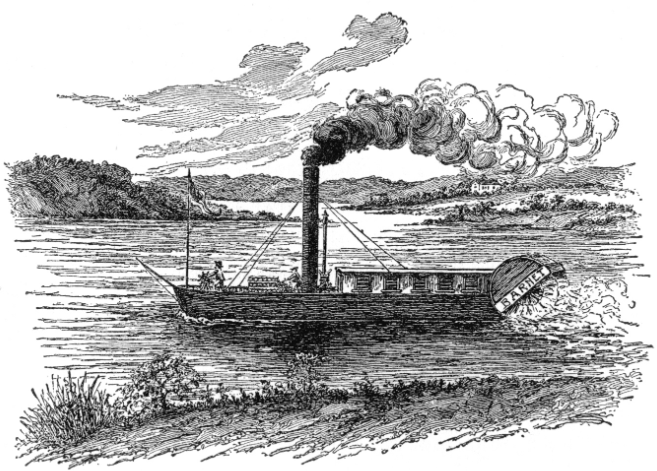Timothy Dwight, former president of Yale, traveled through New England and New York beginning in the 1790s. The first volume of his four-volume account of his travels included this description of the South Hadley Canal.
(taken from Download the PDF.)
About five or six miles above Chequapee [Chicopee] we visited South Hadley Canal. Before this canal was finished, the boats were unloaded at the head of the falls, and the merchandise embarked again in other boats at the foot.
The removal of this inconvenience was contemplated many years since, but was never seriously undertaken until the year 1792, when a company was formed, under the name of the proprietors of the locks and canals in Connecticut river, and their capital distributed into five hundred and four shares. . . .
A dam was built at the head of the falls, following, in an irregular and oblique course, the bed of rocks across the river. The whole height of the dam was eleven feet, and its elevation above the surface, at the common height of the stream, four. Its length was two hundred rods.
Just above the dam the canal commences, defended by a strong guard-lock, and extends down the river two miles and a quarter. At the lower end of the canal was erected an inclined plane. . . .
The outlet of the canal was secured by a sufficient lock, of the common construction. When boats were to be conveyed down the intended plane, they passed through the lower lock, and were received immediately through folding doors into a carriage, which admitted a sufficient quantity of water from the canal to float the boat. As soon as the boat was fairly within the carriage, the lock and the folding-doors were closed, and the water suffered to run out of the carriage through sluices made for that purpose. The carriage was then let slowly down the inclined plane. . . .
The machinery, by which the carriage was raised or lowered, consisted of a water-wheel, sixteen feet in diameter, on each side of the inclined plane; on the axis of which was wound a strong iron chain, formed like that of a watch, and fastened to the carriage.
When the carriage was to be let down, a gate was opened at the bottom of the canal; and the water, passing through a sluice, turned these wheels, and thus slowly unwinding the chain, suffered the carriage to proceed to the foot of the plane by its own weight. When the carriage was to be drawn up, this process was reversed. The motion was perfectly regular, easy, and free from danger. . . .
Source
Travels in New England and New York, Vol.1, by Timothy Dwight (William Baynes and Son, 1823).



